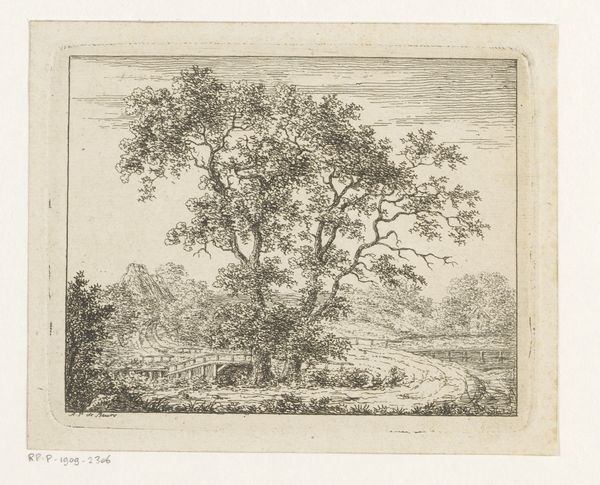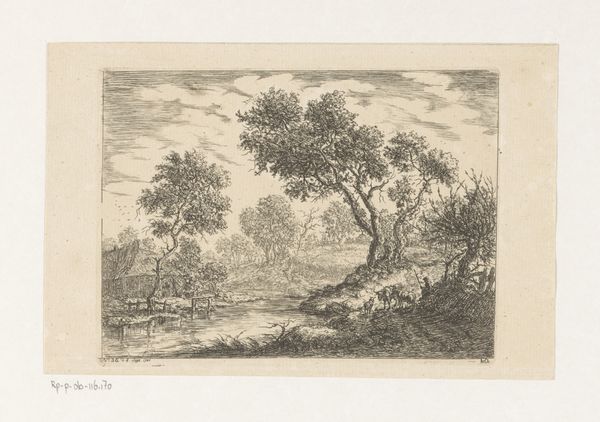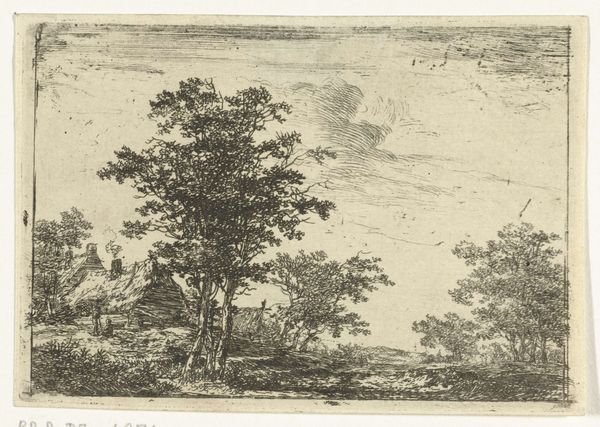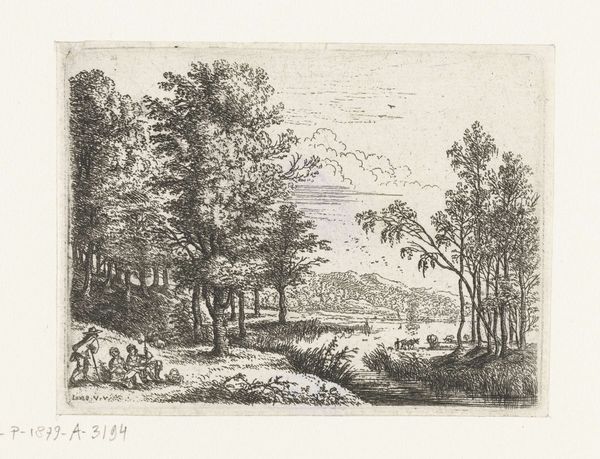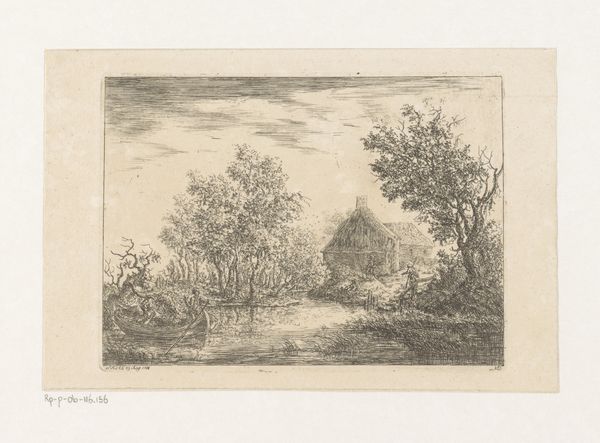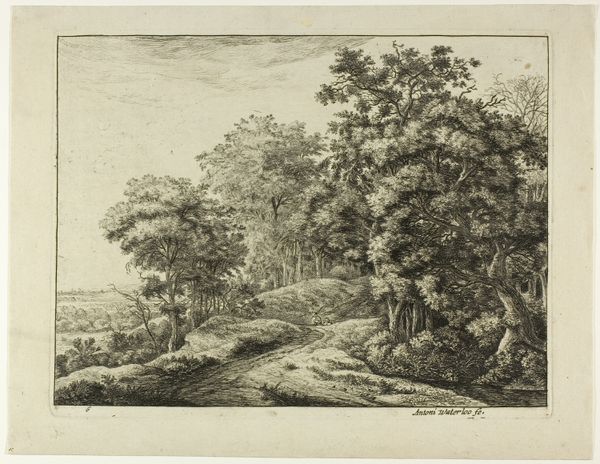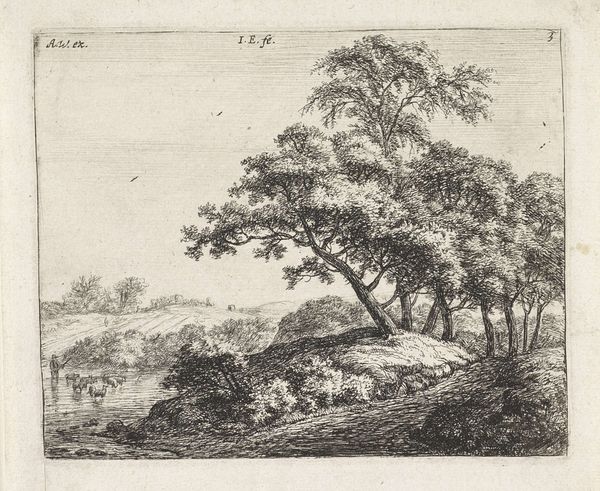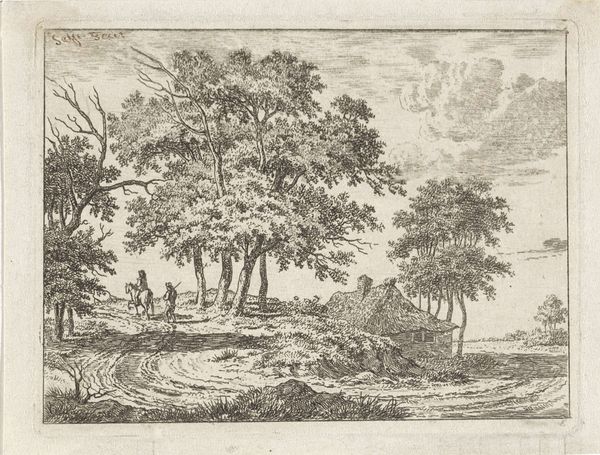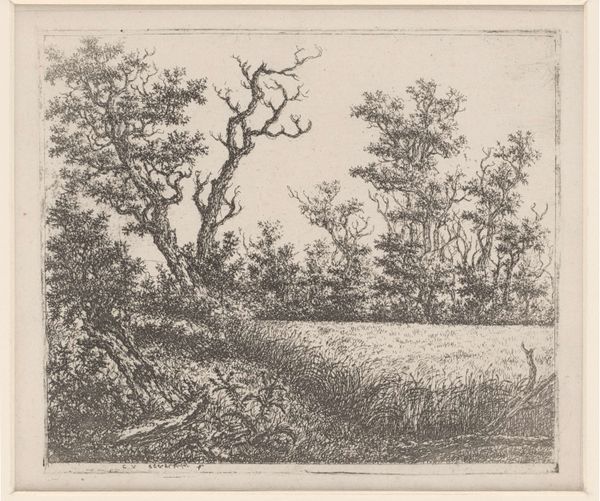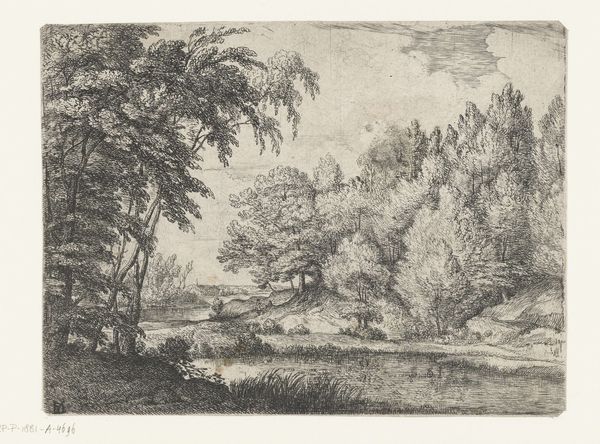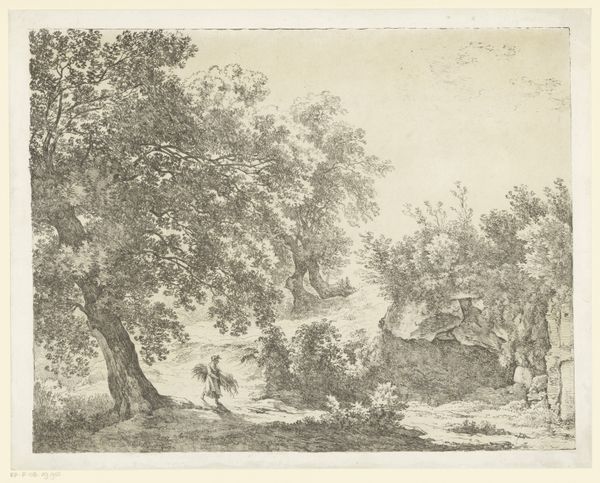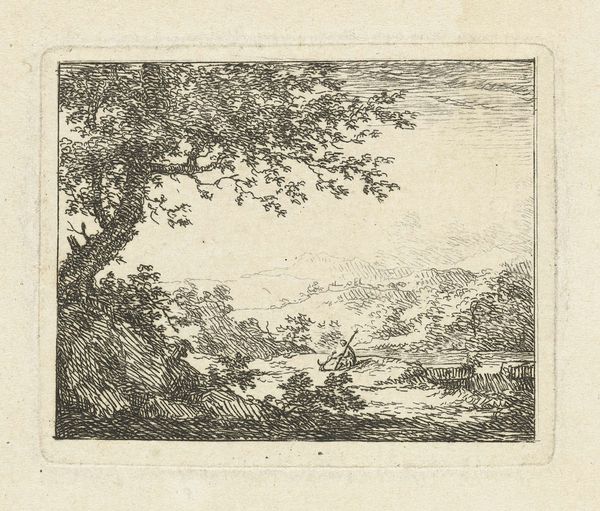
Landschap met een brug waar een man met twee koeien over loopt 1812 - 1832
0:00
0:00
drawing, etching
#
drawing
#
etching
#
landscape
#
etching
#
romanticism
Dimensions: height 101 mm, width 151 mm
Copyright: Rijks Museum: Open Domain
Curator: Looking at this, I’m immediately drawn to the sense of solitude. It's quiet, pastoral; a little melancholy maybe? Editor: I find that etching techniques really lend themselves well to this sense of quiet you mention. This landscape is titled "Landschap met een brug waar een man met twee koeien over loopt," or "Landscape with a bridge where a man walks over it with two cows", by André Paul de Beurs-Stiermans, created sometime between 1812 and 1832. Note the etching work of the reflections in the water, creating pattern through simple variations. Curator: Yes, and those delicate lines really emphasize the human interaction with the landscape, highlighting the scale between man and nature. But it does not focus solely on man, because this interaction involves work animals central to modes of agriculture and human subsistence at the time. The artist depicts a kind of symbiotic dependency here, where each exists for the support of the other. Editor: Exactly, the means of producing art reflect a very material dependency and perspective. Romanticism isn't often linked to daily life but etching processes reflect that. This work connects art making with more direct applications of skilled labor, rather than, say, a highly symbolic history painting that served mostly decorative or moralistic functions. Curator: I would also like to note the visual and conceptual bridge the artist builds here, not just between people and livestock, but between classes. Land represents security and subsistence. This image depicts laborers within, perhaps a common man herding a more wealthy neighbor's cattle for income, revealing intersectional dependencies. Editor: Well, I suppose there's that, too. The physical landscape then mirrors that interdependence, reflecting and grounding it literally and metaphorically. Look at the rockface, however, to notice an unromantic depiction of work, where each careful hatching and line contributes to a sense of both labor and technical production. Curator: Ultimately, both of those depend on access. Who owns the land determines the work and what both artist and sitter depend on. It asks who controls that landscape and gets to build those bridges in the first place. Editor: Right, the image becomes a conduit for connecting production with human labor but also dependence. We have to consider that in light of labor relations or feudal contracts and agreements when examining works like this. That landscape, seemingly simple and natural, becomes complex once it’s considered in its social context of material and dependency.
Comments
No comments
Be the first to comment and join the conversation on the ultimate creative platform.
